Back
[Case 04]
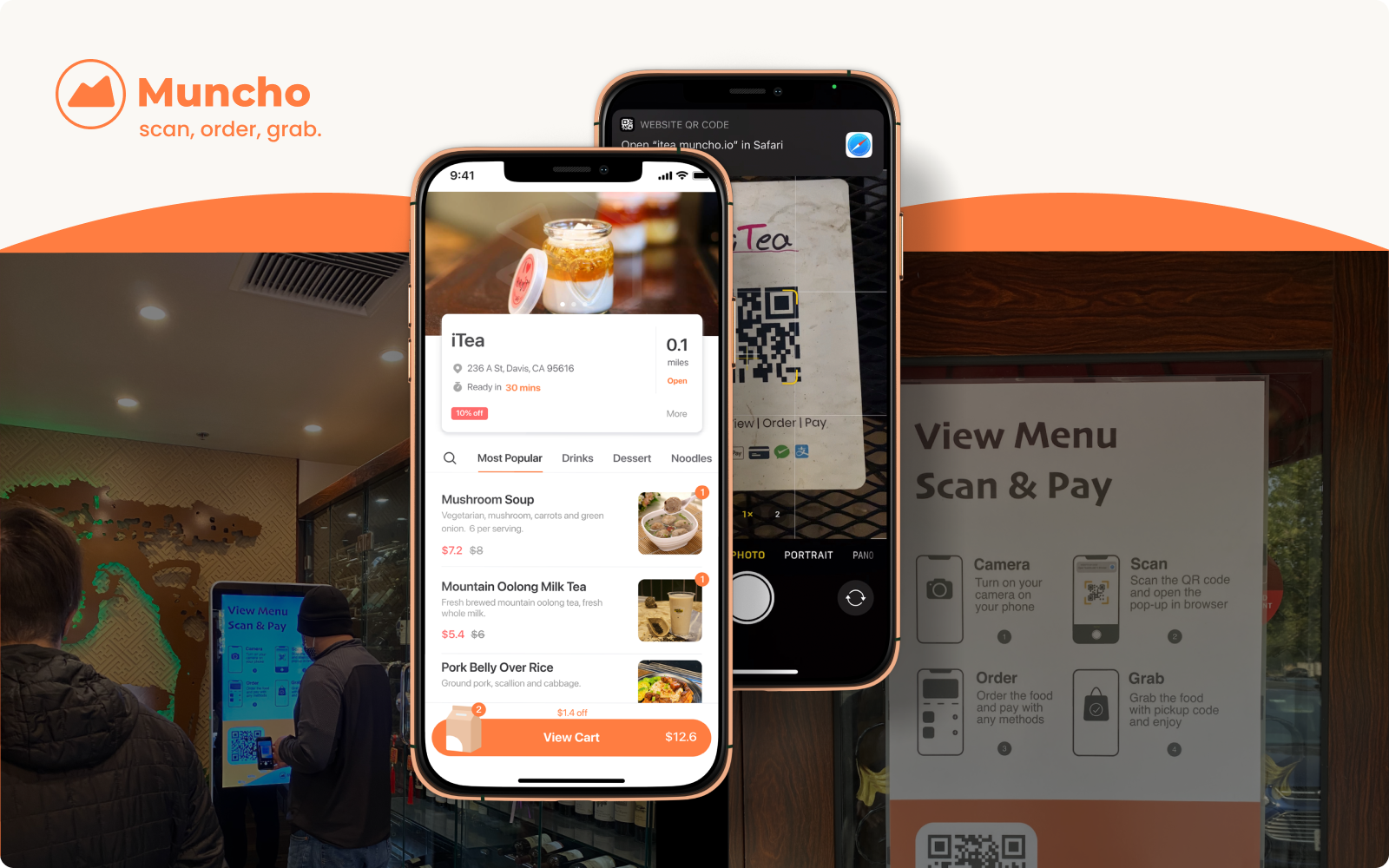
Digital Ordering & Payment Services, Boost Local Growth.
Gained more than 4,000 new users within the first 2 months we launched the product in Davis, helping local restaurants increase online orders by 10-15%.
[Project Overview]
Muncho was born in the middle of COVID-19 pandemic, aiming to help restaurants safely reopen by offering contactless QR code ordering and payment services. I worked as a product designer in the international teams, collaborating agilely with the company founder, product team and development team across the entire product cycle.
[Industry]
E-commerce
[My Role]
Product Designer
[Platforms]
Mobile App
Web App
[Timeline]
2019-2020
[Collaboration]
CEO & co-founder | 1 Product Manager | Customer Service | Engineering Team | Business Team
[Problem Statement]
Restaurants face new challenges to safely re-open their business under the COVID-19 social distancing regulations.

[Solution]
We help the restaurants to increase their sales by offering contactless QR code ordering and payment services.

[Initial Research]
We chose quantitative approach over qualitative to collect richer and more insightful information.
- 10 interviews with local restaurant owners to understand their business performance
- 15 interviews with customers who use food ordering apps on a daily basis to reveal their motivations and behaviors.

[Findings]
Key insights from the restaurant owners:
- Slow business requires labor reduction
- Limited outdoor seating requires fast table turnover rate
- Extra work for customer retention.
Key insights from the end-customers:
- People are afraid of the unqualified sanitation condition in the restaurants
- Less contact with the waiters or waitresses would be ideal
- Having photos on the menu can help customers to quickly make decisions
[Reframe the problem:]
How can we redesign the ordering and payment system to help customers feel safe and quickly place orders in order to increase the restaurant's table turnover rate?
[Ideation]
A contactless ordering and payment services to relieve customers’s concerns.
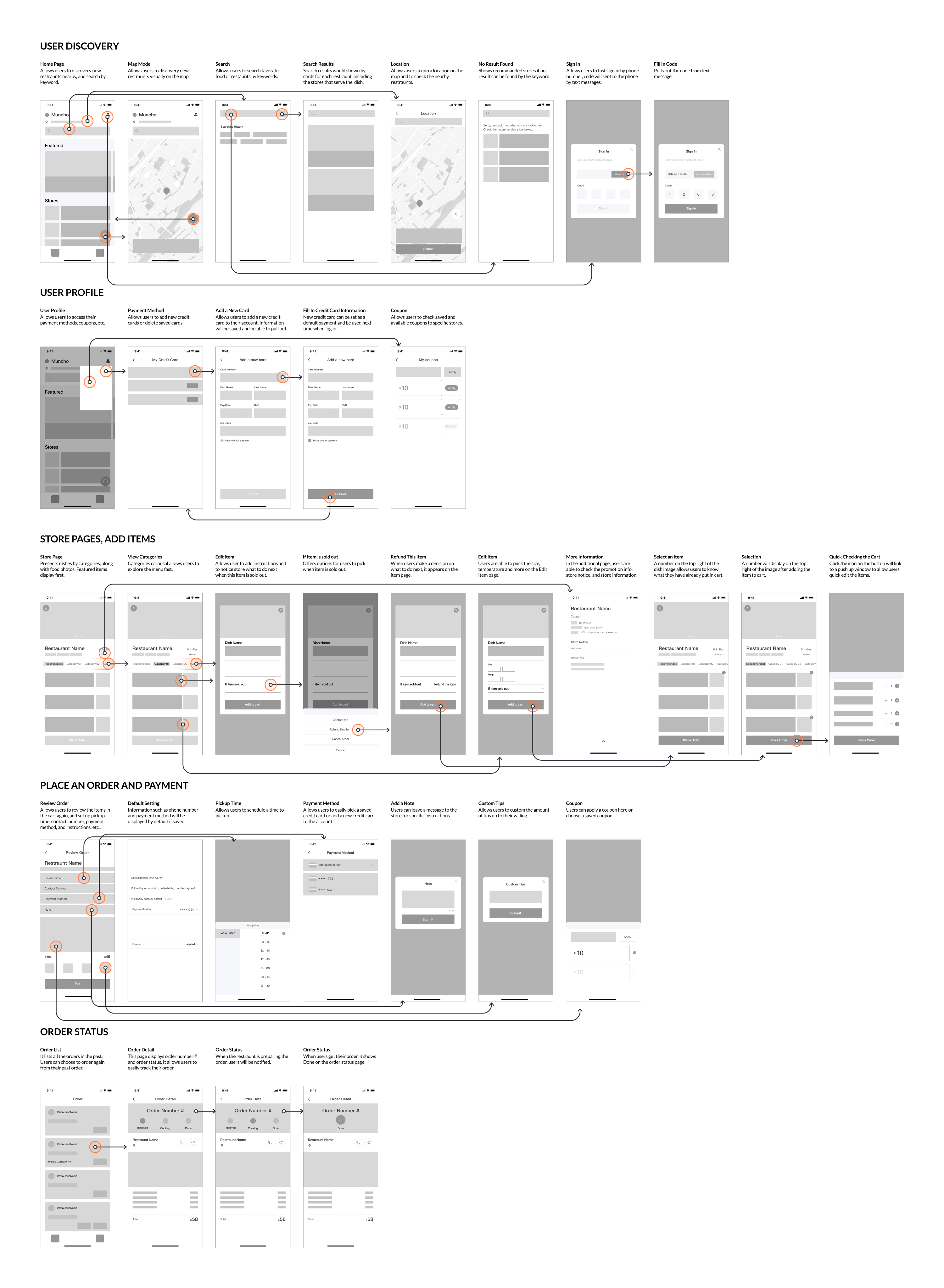
[Initial prototype]
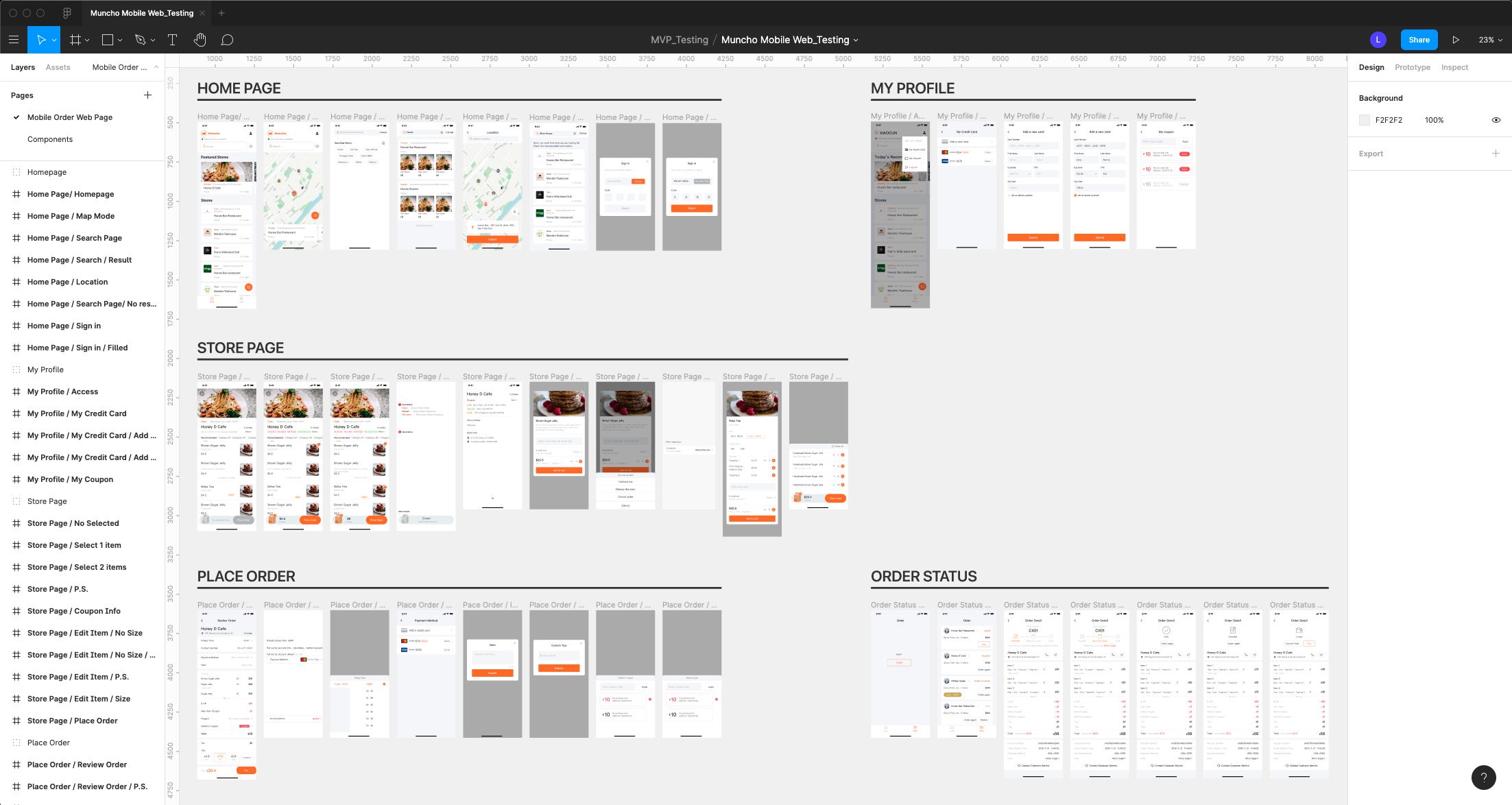
[Usability Testing]
I planned and drove the usability testing by interviewing 15 people through zoom meetings and in-person observations to find out what we have failed with the current built in order to continue refining our product for a better user experience.
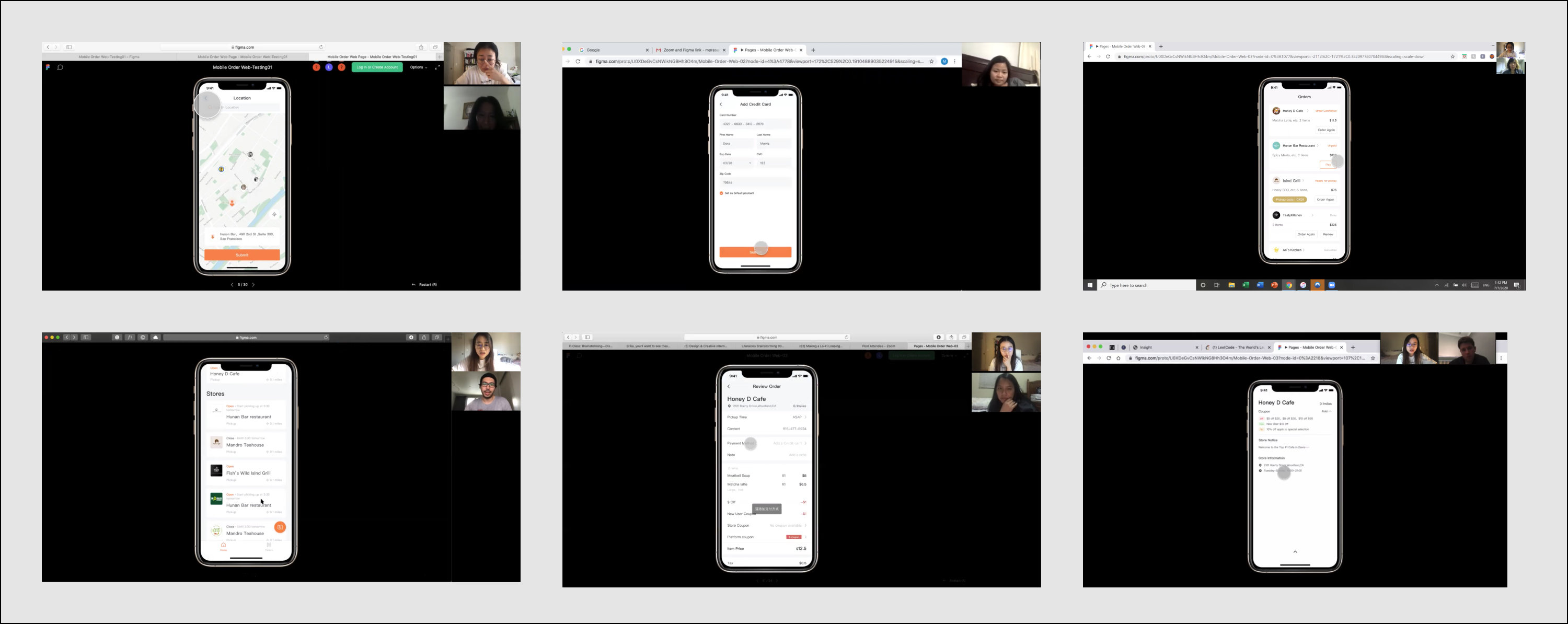
[Iterations #1]
“Map Mode” reduces order placing time.
- Over the 30 people we interviewed, 80% of them clicked the “Map mode” icon and got confused about what it was. Some people understood it as a “send a message” or “order location” icons which took them extra time to go back to the “List View Mode.”
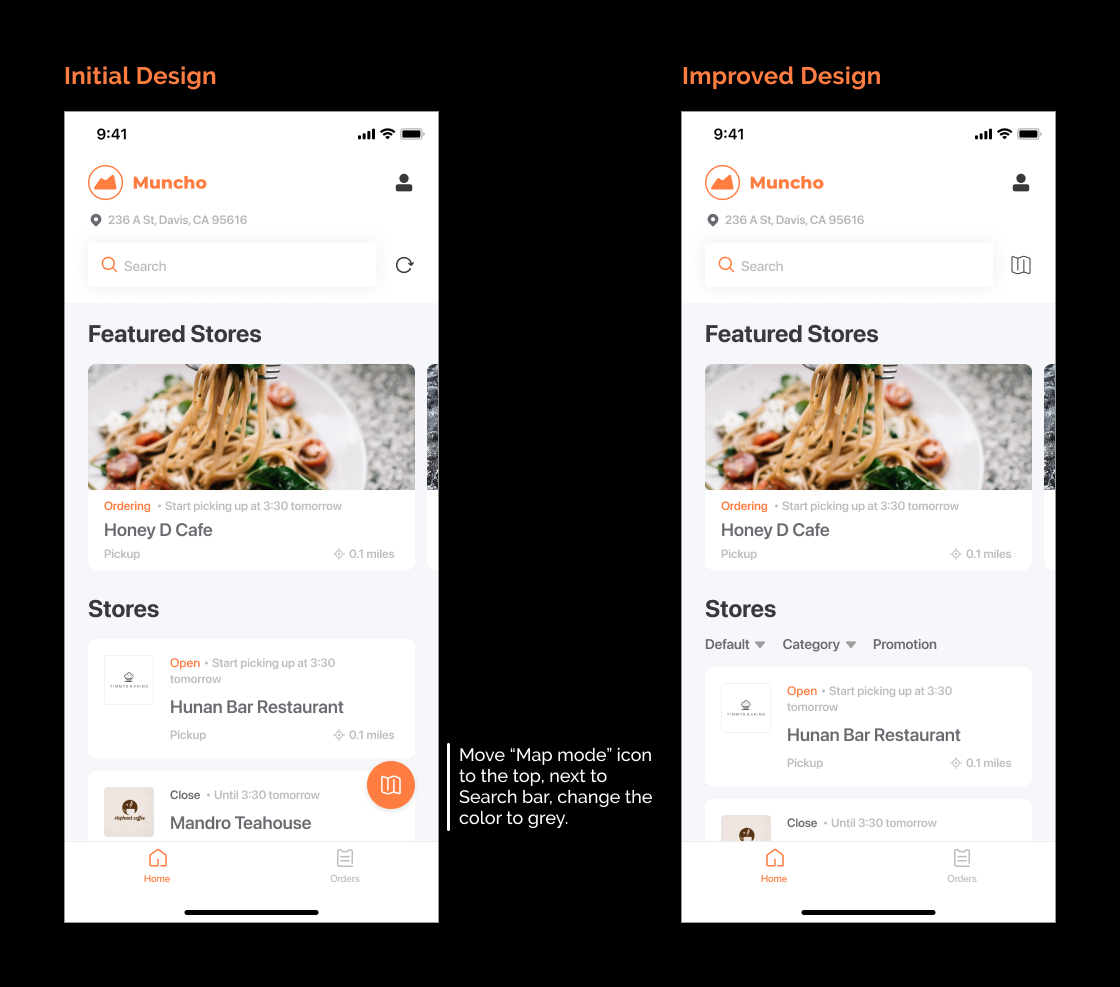
[Iterations #2]
Coupons are confusing.
- Coupon was our marketing strategy to help restaurants increase sales.
- However, over 50% of the people were confused about the coupon, such as “What do the color codes of the coupons mean?”

[Iterations #3]
Order list lacks arrangement.
- 80% of the people we interviewed felt confused after placing the order. They expected to see the order they just placed only. Having all the past orders listed below creates confusion.
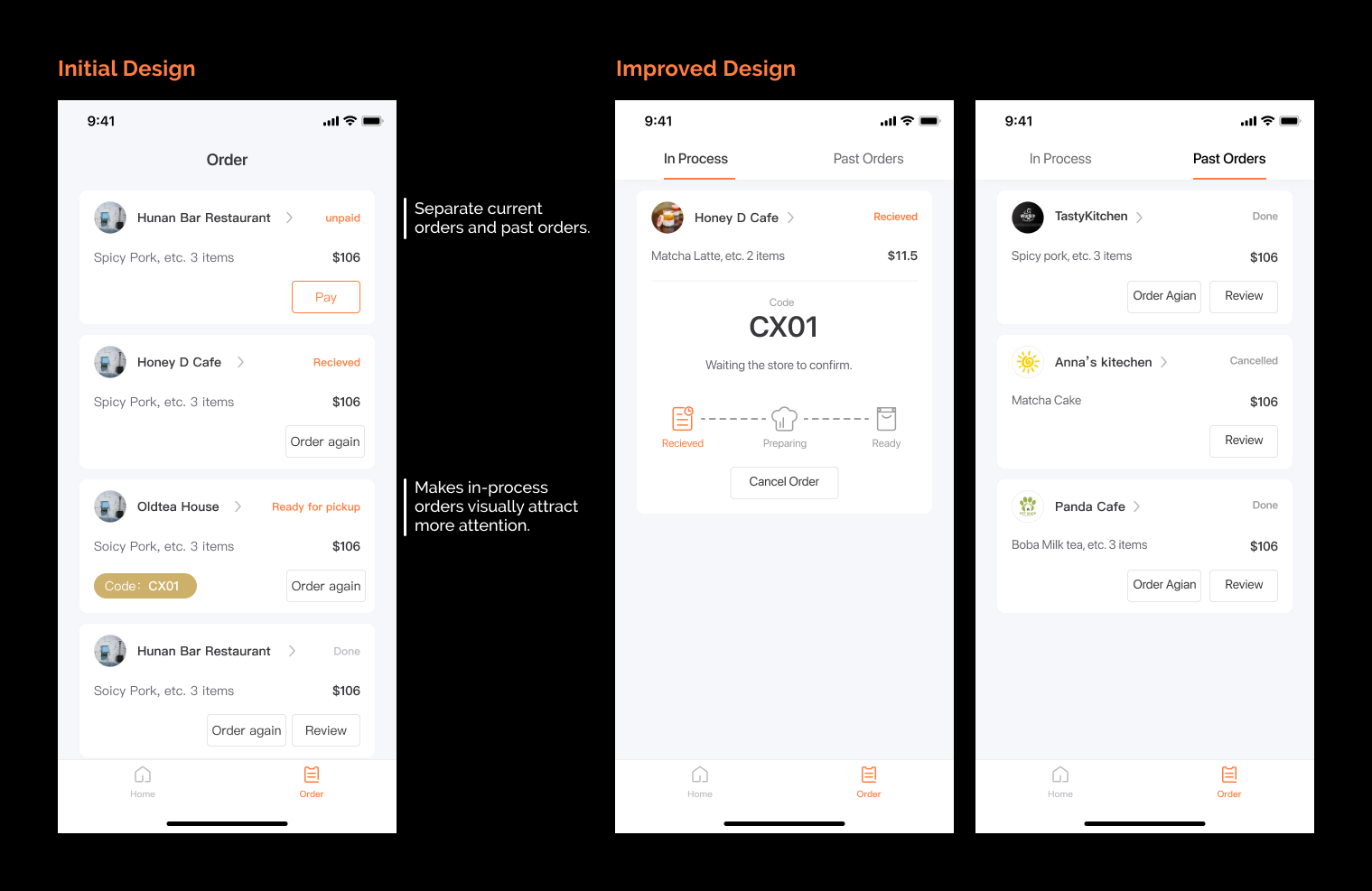
[Iterations #4]
Lack of QR code knowledge in the market.
- 30% of the interviewee says they rarely have the habit to scan the QR code and don’t know which app to use to scan the code. It’s our challenge to educate people how to use our product.

[Key Learnings]
- Learning curve: A learning curve is expected when launching new products. Providing clear instructions can help users adapt to our products more quickly.
Back
[Case 04]

Digital Ordering & Payment Services, Boost Local Growth.
Gained more than 4,000 new users within the first 2 months we launched the product in Davis, helping local restaurants increase online orders by 10-15%.
[Project Overview]
Muncho was born in the middle of COVID-19 pandemic, aiming to help restaurants safely reopen by offering contactless QR code ordering and payment services. I worked as a product designer in the international teams, collaborating agilely with the company founder, product team and development team across the entire product cycle.
[Industry]
E-commerce
[My Role]
Product Designer
[Platforms]
Mobile App
Web App
[Timeline]
2019-2020
[Collaboration]
CEO & co-founder | 1 Product Manager | Customer Service | Engineering Team | Business Team
[Problem Statement]
Restaurants face new challenges to safely re-open their business under the COVID-19 social distancing regulations.

[Solution]
We help the restaurants to increase their sales by offering contactless QR code ordering and payment services.

[Initial Research]
We chose quantitative approach over qualitative to collect richer and more insightful information.
- 10 interviews with local restaurant owners to understand their business performance
- 15 interviews with customers who use food ordering apps on a daily basis to reveal their motivations and behaviors.

[Findings]
Key insights from the restaurant owners:
- Slow business requires labor reduction
- Limited outdoor seating requires fast table turnover rate
- Extra work for customer retention.
Key insights from the end-customers:
- People are afraid of the unqualified sanitation condition in the restaurants
- Less contact with the waiters or waitresses would be ideal
- Having photos on the menu can help customers to quickly make decisions
[Reframe the problem:]
How can we redesign the ordering and payment system to help customers feel safe and quickly place orders in order to increase the restaurant's table turnover rate?
[Ideation]
A contactless ordering and payment services to relieve customers’s concerns.

[Initial prototype]

[Usability Testing]
I planned and drove the usability testing by interviewing 15 people through zoom meetings and in-person observations to find out what we have failed with the current built in order to continue refining our product for a better user experience.

[Iterations #1]
“Map Mode” reduces order placing time.
- Over the 30 people we interviewed, 80% of them clicked the “Map mode” icon and got confused about what it was. Some people understood it as a “send a message” or “order location” icons which took them extra time to go back to the “List View Mode.”

[Iterations #2]
Coupons are confusing.
- Coupon was our marketing strategy to help restaurants increase sales.
- However, over 50% of the people were confused about the coupon, such as “What do the color codes of the coupons mean?”

[Iterations #3]
Order list lacks arrangement.
- 80% of the people we interviewed felt confused after placing the order. They expected to see the order they just placed only. Having all the past orders listed below creates confusion.

[Iterations #4]
Lack of QR code knowledge in the market.
- 30% of the interviewee says they rarely have the habit to scan the QR code and don’t know which app to use to scan the code. It’s our challenge to educate people how to use our product.

[Key Learnings]
- Learning curve: A learning curve is expected when launching new products. Providing clear instructions can help users adapt to our products more quickly.
Back
[Case 04]

Digital Ordering & Payment Services, Boost Local Growth.
Gained more than 4,000 new users within the first 2 months we launched the product in Davis, helping local restaurants increase online orders by 10-15%.
[Project Overview]
Muncho was born in the middle of COVID-19 pandemic, aiming to help restaurants safely reopen by offering contactless QR code ordering and payment services. I worked as a product designer in the international teams, collaborating agilely with the company founder, product team and development team across the entire product cycle.
[Industry]
E-commerce
[My Role]
Product Designer
[Platforms]
Mobile App
Web App
[Timeline]
2019-2020
[Collaboration]
CEO & co-founder | 1 Product Manager | Customer Service | Engineering Team | Business Team
[Problem Statement]
Restaurants face new challenges to safely re-open their business under the COVID-19 social distancing regulations.

[Solution]
We help the restaurants to increase their sales by offering contactless QR code ordering and payment services.

[Initial Research]
We chose quantitative approach over qualitative to collect richer and more insightful information.
- 10 interviews with local restaurant owners to understand their business performance
- 15 interviews with customers who use food ordering apps on a daily basis to reveal their motivations and behaviors.

[Findings]
Key insights from the restaurant owners:
- Slow business requires labor reduction
- Limited outdoor seating requires fast table turnover rate
- Extra work for customer retention.
Key insights from the end-customers:
- People are afraid of the unqualified sanitation condition in the restaurants
- Less contact with the waiters or waitresses would be ideal
- Having photos on the menu can help customers to quickly make decisions
[Reframe the problem:]
How can we redesign the ordering and payment system to help customers feel safe and quickly place orders in order to increase the restaurant's table turnover rate?
[Ideation]
A contactless ordering and payment services to relieve customers’s concerns.

[Initial prototype]

[Usability Testing]
I planned and drove the usability testing by interviewing 15 people through zoom meetings and in-person observations to find out what we have failed with the current built in order to continue refining our product for a better user experience.

[Iterations #1]
“Map Mode” reduces order placing time.
- Over the 30 people we interviewed, 80% of them clicked the “Map mode” icon and got confused about what it was. Some people understood it as a “send a message” or “order location” icons which took them extra time to go back to the “List View Mode.”

[Iterations #2]
Coupons are confusing.
- Coupon was our marketing strategy to help restaurants increase sales.
- However, over 50% of the people were confused about the coupon, such as “What do the color codes of the coupons mean?”

[Iterations #3]
Order list lacks arrangement.
- 80% of the people we interviewed felt confused after placing the order. They expected to see the order they just placed only. Having all the past orders listed below creates confusion.

[Iterations #4]
Lack of QR code knowledge in the market.
- 30% of the interviewee says they rarely have the habit to scan the QR code and don’t know which app to use to scan the code. It’s our challenge to educate people how to use our product.

[Key Learnings]
- Learning curve: A learning curve is expected when launching new products. Providing clear instructions can help users adapt to our products more quickly.